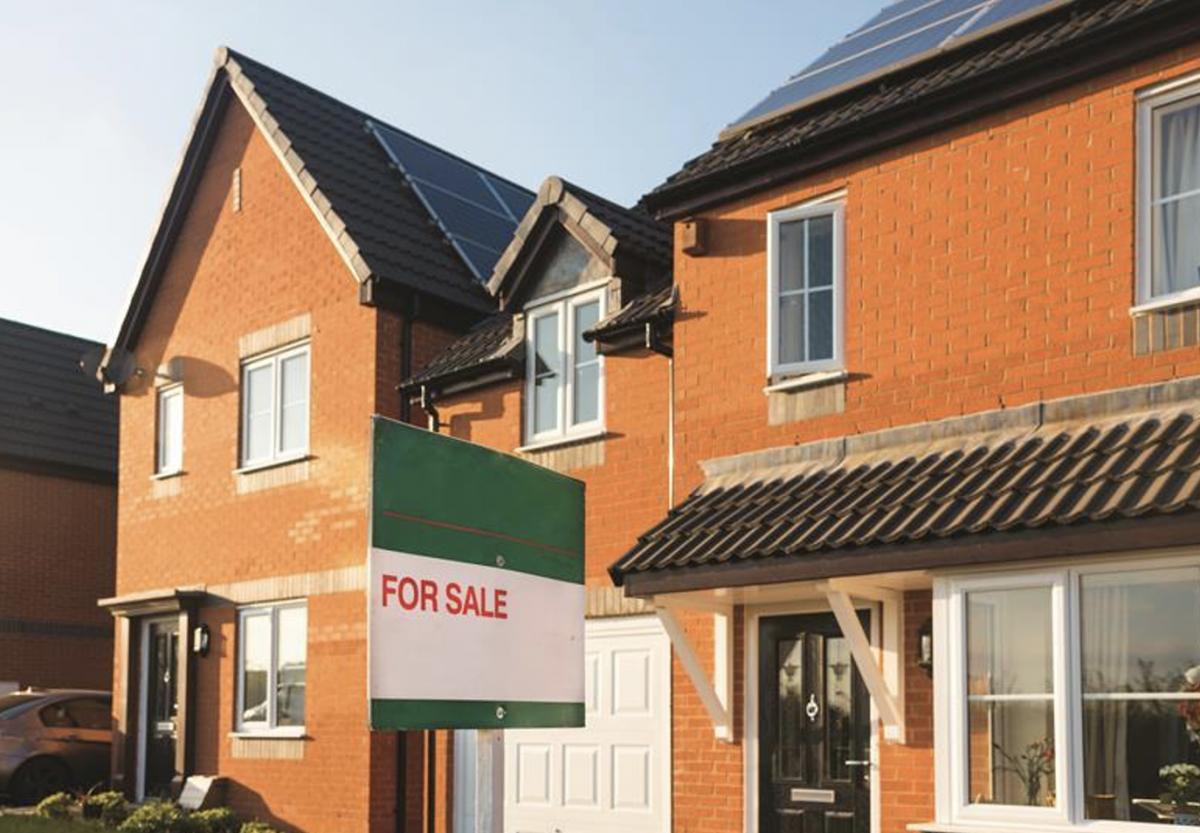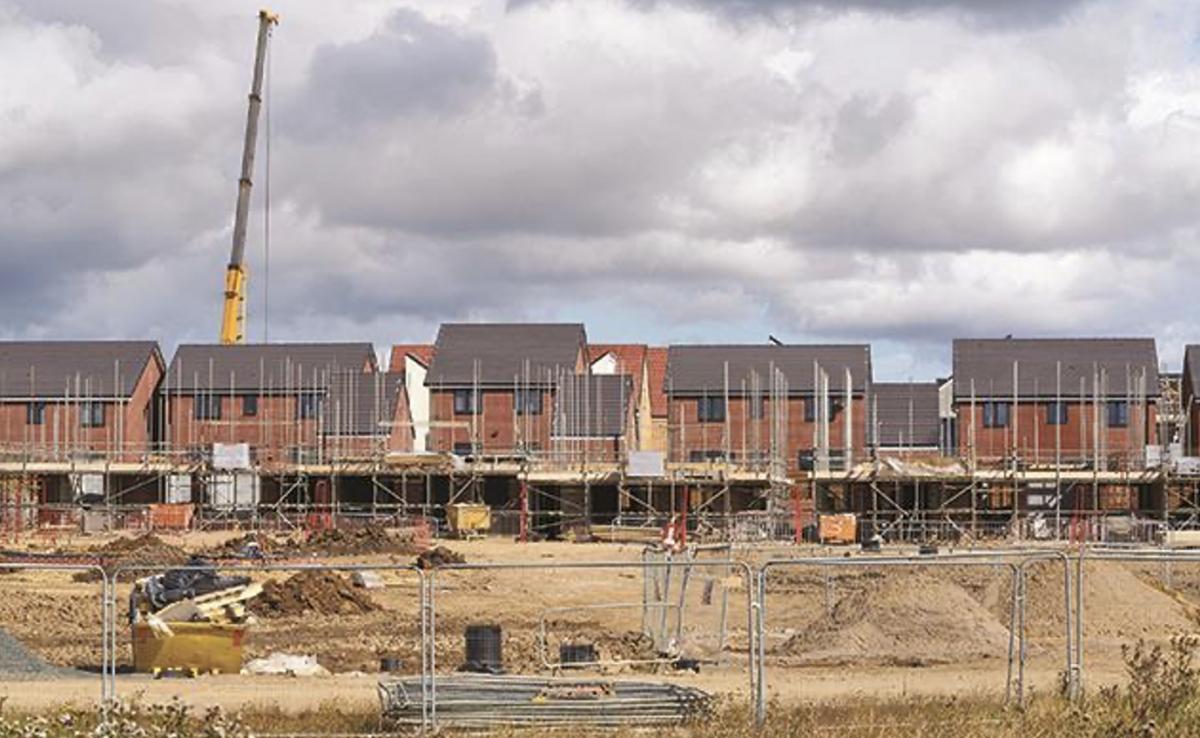Will CBILS come back to bite?
While chancellor Rishi Sunak’s financial support for businesses during the pandemic was welcomed by the industry, there are those who believe that for some, it may result in more problems than it solves.
For the majority of developers, the Coronavirus Business Interruption Loan Scheme (CBILS) was a much-needed financial boost that helped to see them through the crisis.
However, Michael Dean, co-founder of lending group Avamore Capital, believes some residential developers, particularly smaller ones, have over-leveraged themselves and warns that this could come back to bite them if the housing market contracts in the next few years.
“The issue we face is that developers have taken these high-LTV loans in a rising market,” he explains. “Many of those will have had the option to borrow up to 75% of a project’s value. While CBILS were low-cost loans, there could be a situation where some have highly leveraged schemes.
“The market only needs to fall a little and 75% leverage can quickly become 95% if the borrower and valuer’s estimates are out by the usual 10% tolerance, even if build budgets remain on track.
“We may face a scenario where we could see future defaults on these loans with repercussions for the directors who provided personal guarantees.”

So how exposed are developers that have taken out CBILS loans – and what are the potential repercussions?
A recent freedom-of-information request from personal guarantee insurer Purbeck to the British Business Bank revealed the full scale of personal risk taken by SME business owners through CBILS.
The information unearthed by Purbeck reveals that as of 31 March, when CBILS closed, small company directors had more than £2bn of personal guarantees on the line.
The data shows that 1,981 loans to the value of £1.54bn were advanced with a personal guarantee in place as security for the lender. In addition, 356 loans to the value of £579m were advanced with personal property as security.
Risk to owners
This takes the total value of loans that pose a personal financial risk to the business owner to more than £2.1bn, with the average CBILS loan backed by a personal guarantee standing at £774,389.
A personal guarantee puts the borrower’s home and personal assets on the line as security if the business fails and the loan is called in.
Under CBILS, for loans of more than £250,000, lenders were permitted to ask for additional security from the borrower in the form of a personal guarantee.
Based on the average loan of £774,389, if the business has minimal assets, the owner would need to pay back close to £154,877 to the lender.
When CBILS came to an end in March, the government replaced it with the Recovery Loan Scheme (RLS), which runs to the end of this year.
However, Purbeck’s managing director Todd Davison points out that while 42% of CBILS applications were approved, the approval rate for RLS is expected to be around half this rate.

Therefore, if already highly leveraged developers face a cash crunch, they are going to find it tougher to access more government lending, according to Davison.
“For many firms, access to further funding through the RLS will be off limits as they will have capped out on the maximum CBILS loan value or they may not meet the far more stringent affordability measures,” says Davison.
“Seeking finance independently is therefore highly likely to hinge on signing a further personal guarantee, so it is really vital business owners are made aware of the steps they can take to protect their personal assets.”
An additional concern is whether firms will be able to pay the loans back. With interest rates of up to 15% following the 12-month grace period, we could see thousands of firms struggling to meet the repayments.
“Maintaining dialogue with the lender and calculating costs so that they can be factored into the business’s outgoings will help businesses identify at the earliest opportunity where they may need additional support as we get to other side of the pandemic,” says Davison.
While some finance experts think CBILS could end up badly backfiring, some developers and lenders argue that the government’s support provided a sensible route through the pandemic for many businesses.
Market resilience
A loan recently structured by LEXI Finance on behalf of Daniel James Developments resulted in the housebuilder being provided with a facility of 67% loan-to-gross-development value for a housing scheme in Writtle, near Chelmsford.
The lender, Assetz Capital, which did not exist before the global financial crisis in 2008, was supported by a government-backed CBILS guarantee that enabled it to write the loan.
Sam Le Pard, co-founder at LEXI Finance, is not concerned by the leverage on the scheme.
“We’re still seeing the economic impact of the pandemic pan out,” he says. “While many lenders remain hesitant about certain types of commercial property, the market funding housebuilders is bullish. This resilience partly stems from the fragmentation that occurred following 2008, but it has also clearly been driven by massive levels of government support.
“The development finance market may have needed a shot in the arm as much as the rest of the country, but now it’s back.”
Help for lending market
Le Pard adds that it is vital that the lending tap remains on for SME developers. “Help for all corners of the lending market will remain invaluable if we are to meet the country’s need for new homes,” he reasons.
“While the high-volume plc housebuilders will continue to be supported by high street banks, it is the continued strength of the lenders supporting SME developers that will be crucial.”
However, Dean is concerned that the government has chosen to direct funds into an industry that may not have needed as much support as others. He thinks the cash injection has the potential to cause a land price bubble that could burst and make life for any highly leveraged developers even tougher.
“Compared with other industries, there were fewer factors stopping property development during the beginning of the pandemic,” says Dean.
“While criteria from development lenders became tighter temporarily, most bridge and development lenders, including ourselves, were back to near normal by the middle of the summer of 2020.”
He believes there was less justification for the government to direct “easy and cheap money” to property developers compared with other sectors such as hospitality that really needed the support.
“That has played a part in creating an inflated development land market, because you’ve got some developers who have released cash from their existing completed or near-completed sites on a highly leveraged basis to secure new sites,” he says.
With construction costs also soaring as a result of Brexit and Covid, some higher-leverage CBILS development loans could already be “under water”, he adds.
“Most landowners have been reluctant to sell sites out of fear of a depressed market. This means there’s a lot more money than available sites, putting upward pressure on land values, in an environment with rising construction prices and a frothy housing market driven artificially by government incentives.
“This isn’t a great combination of factors and unfortunately could land some developers in sticky situations where their developments are under water.”
Too highly leveraged
Dean accepts that if there is a strong post-pandemic economic recovery, those highly leveraged developers may be able to avoid the worst.
He nevertheless remains cautious in his outlook. “I cannot say whether or not this will happen, but I think there’s definitely a risk if current prices in the housing market cannot be sustained,” he says.
“The impact is not going to be seen immediately. If the housing market does drop 5% to 10% from its current levels, I think we’re potentially looking at the cracks beginning to appear in maybe 12 or 15 months as schemes start to reach practical completion, and then we may see the issues appearing in a more widespread manner six to nine months after that if lenders start to enforce on loans.”
Concerns over the ability of smaller businesses to pay back the government-backed loans have already led to hundreds of businesses writing to the chancellor urging him to scrap repayments or risk a tidal wave of insolvencies and business failures.
However, it is estimated that writing off loan repayments would cost the Treasury around £68bn at a time when the chancellor is watching the pennies, so it is unlikely he will yield to the pressure. In the meantime, the concerns over the future of highly leveraged businesses will continue to mount.
David Parsley I Thu 17 June 2021 I Property Week